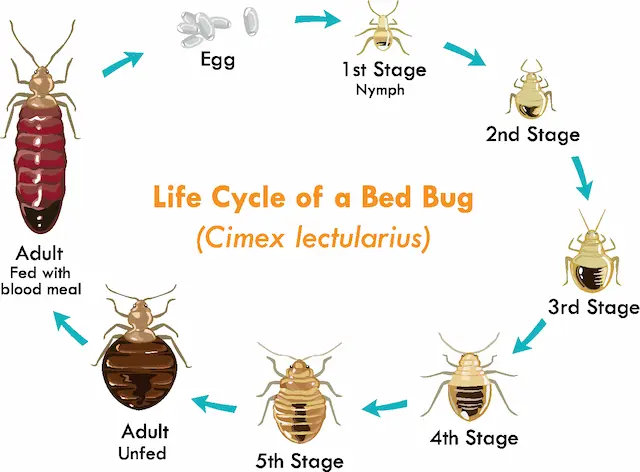Bed bugs are some of the most stubborn and annoying uninvited guests you could have. These tiny bugs always seem to find a way to get into our lives and ruin our peace of mind. To get rid of these pests successfully, you need to know how they act and how long they live.
Patterns of behaviour:
Bed bugs like to come out at night to feed on the blood of their hosts, who are usually people who don’t notice them. They like the carbon dioxide and heat that we give off when we sleep. Once they find a good host, they use special parts of their mouths to cut the skin and get blood. Most of the time, their bites don’t hurt right away, and many people don’t know they’ve been bitten until they get itchy welts.
After eating, bed bugs go back to their hiding places, which can be cracks in walls, crevices in furniture, or seams in pillows. They are good at hiding and can get into places you wouldn’t expect. Because they hide during the day, it’s hard to find them. This means that infestations often go unchecked until they become a big problem.
Cycle of life:
A bed bug’s life cycle has several stages, and each one has its own traits and ways of acting.
Egg: Bed bug females lay their eggs in tiny cracks and crevices close to where they hide. These eggs are about the size of a pinhead and are often stuck to things. During her life, a female can lay a lot of eggs.
Nymphs: When bed bug eggs hatch, they turn into nymphs, which are small and see-through versions of the adults. Nymphs go through five stages of growth, and at each stage, they lose their shell. For them to move on to the next stage, they need to eat blood. As soon as they hatch, nymphs are able to eat.
Adults: When nymphs have finished growing, they turn into adults. Bed bugs are about the size and colour of an apple seed when they are adults. In the best settings, they can live for several months to a year or more. Their ability to live a long time and have babies depends on how often they can get blood meals.
Reproducing and spreading:
There is a process called “traumatic insemination” that bed bugs use to make more bugs. Bed bug males pierce the females’ abdomens and send sperm right into their bodies. The special way that female bed bugs reproduce can be hard on their bodies.
A single female bed bug can lay a lot of eggs over the course of her life, which helps an infestation grow quickly. Because of this and the fact that they are good at hiding, bed bug numbers are hard to control without the help of a professional.
How to stop it and how to fix it:
Understanding how bed bugs act and how they live is important for coming up with effective ways to stop them and get rid of them. Checking your living places, like mattresses, furniture, and cracks in the walls, on a regular basis can help you find pests early. If you take care of bites or small blood spots on your bedding right away, you can stop the problem from getting worse.
If you find signs of an infestation, it’s best to call qualified exterminators for help. They know how to get rid of bed bugs at all times of their lives and have the tools to do it. Combining different treatments, like heat treatment, chemical treatments, and steam cleaning, can make sure that the problem is completely gone.
In conclusion, the way bed bugs act and how they live is both interesting and scary. These silent pests have learned how to hide and eat well, which makes them hard to get rid of. You can protect your home and your peace of mind from these persistent pests by learning about how they act and taking steps to avoid and treat infestations.
Never see a bed bug again with Bed Bug Control Bowmanville! All our work is warranted with a full 6-month service warranty.

